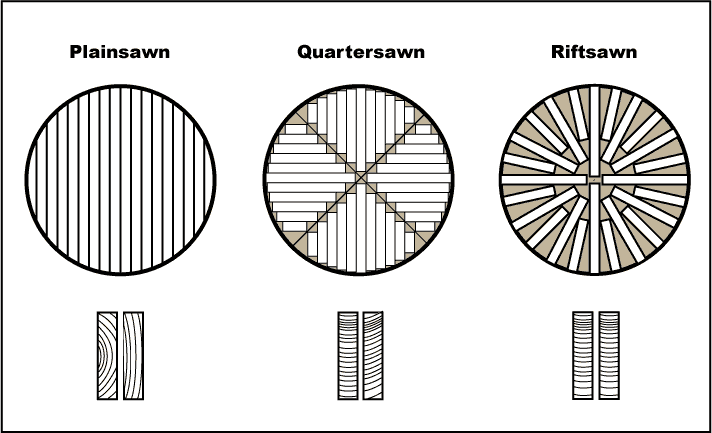Quarter-sawn would include any board or blank from a true quarter-sawn log. So the angle of the growth rings to the face can run from approximately 30 to 90 degrees. It does not get much simpler than this:

Pretty easy to see which boards or blanks are most likely to show very different grain on both major surfaces.
I believe you are correct about the greater risk of splitting in some areas where the end grain is 45 degrees to the face. But that would probably not be near the top of reasons for me to reject such wood.
The other thread ended up getting locked. There was obviously going to never be agreement about what constitutes rift-sawn walnut or quarter-sawn walnut. Part of the problem is that there are various definitions and depictions of the two processes and finished products. Many are self-contradictory, and should immediately be rejected by thinking logically.... for those capable of rational thought. Some fools even say that rift-sawing produces no rift-sawn lumber, and only quarter sawing produces some rift-sawn lumber. I wonder which cut of lumber you get if you grow magic beans???
I was hoping that Queen Stevie would finally explain his absurd and incorrect statements concerning the strength and suitability of rift-sawn walnut for gun stocks.... along with his inability to discern the difference between feather-crotch black walnut and thin shell walnut. Queen Stevie should be along shortly to further demonstrate his lack of knowledge on the subject.